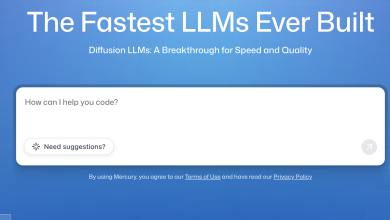
As artificial intelligence (AI) continues to evolve and integrate into our daily lives, the ethical and legal implications of its deployment are drawing increasing scrutiny. From generative AI tools to predictive analytics in healthcare or retail, AI systems are no longer experimental, they are embedded in mainstream products and services. One of the most pressing questions they raise is how consent should work in this new environment, specifically how individuals give permission for their data to be used in training and operating AI systems.
Consent has long been a foundational principle of data protection law. Under the General Data Protection Regulation (GDPR) in the EU and similar frameworks worldwide, consent ensures that individuals retain control over their personal information. It fosters trust between users and organisations and is one of the clearest signals of respect for individual rights. But the application of consent in the context of AI presents unique challenges.
Why consent Is complicated in AI
AI systems require vast amounts of data to function effectively. Much of this information is not collected directly from individuals who knowingly agree to its use. Instead, it often comes from diverse and sometimes opaque sources: social media, online purchases, mobile apps, or public records. This raises questions about transparency and adequacy. Can consent really be considered informed if people are unaware their data is part of an AI training set? Can it be considered specific if the future uses of that data are impossible to predict?
Adding to the complexity, a single, standardised consent mechanism cannot adequately serve the diversity of AI use cases. Just as privacy training for employees must be tailored to the risks faced by different teams, marketing teams managing cookies face different risks than product teams analysing behavioural data. Consent should also be tailored to the ways AI is applied.
For example, a user interacting with a generative AI tool for creative content may require disclosures that differ significantly from those needed by someone using a location-based AI service. Recognising this nuance is essential. It means moving away from static, generic disclosures and toward contextual systems that reflect how data is processed in real time, especially as AI consent requirements overlap with existing privacy regulations.
AI Is Dynamic – so consent must be too
Unlike traditional software, AI models are dynamic. They learn and adapt as new data flows in. An algorithm designed to improve shopping recommendations might later be applied to predictive analytics in a new domain. This raises a consent problem: the permission originally given by a user may not extend to these new, unforeseen uses.
To address this, organisations must treat consent not as a one-time checkbox but as a continuous relationship. As AI systems evolve, so too must the processes for communicating with users and securing their ongoing agreement.
From permission to partnership
The solution lies in moving from a mindset of “permission” to one of “partnership.” This requires a proactive and transparent approach, one that clearly communicates how data will be used, ensures that consent is specific and informed, and allows individuals to withdraw their consent easily at any time.
Achieving this standard calls for more than minimal compliance. It means embedding privacy into the foundation of how AI systems are built and maintained. Practices like Privacy by Design, regular Data Protection Impact Assessments (DPIAs), and appointing privacy champions within teams should become the norm. DPIAs can highlight when a new AI feature materially changes the use of personal data, triggering re-consent or added safeguards. Privacy champions can help ensure practices stay aligned with both regulation and user expectations.
Tools for a living consent process
Technology itself can support better consent in AI. Consent management platforms provide organisations with tools to manage user preferences dynamically, ensuring that changes are captured and respected in real time. AI auditing tools can monitor how data is used, track model evolution, and flag when consent boundaries risk being crossed.
For example, a consent management system might automatically prompt users to review their permissions when a model begins applying their data to a new purpose. Similarly, an auditing tool might reveal “model drift,” showing when an AI system starts producing outputs beyond its original scope. These mechanisms help ensure that consent is treated as part of a living, responsive process rather than a one-off transaction.
Why robust consent matters
As AI technologies become more deeply integrated into society, robust and meaningful consent mechanisms are vital. People’s willingness to use AI tools − and by extension, the sustainability of AI-driven business models − depends on trust.
Organisations that view consent as a static legal formality risk regulatory penalties and, just as importantly, the erosion of user confidence. In contrast, those that prioritise transparency, user empowerment, and ongoing oversight will build stronger, more durable relationships. They will also stand out as leaders in an industry where ethics and compliance increasingly shape competitive advantage.
Rethinking consent for a sustainable future
The future of AI demands that organisations rethink how consent is obtained, maintained, and respected. By moving from permission to partnership, companies can shift from seeing consent as an obstacle to seeing it as an opportunity to strengthen user trust.
This transition requires continuous communication, adaptive processes, and technological tools that make dynamic consent practical at scale. Above all, it requires a cultural shift: an understanding that individuals are not passive data points but active stakeholders in the AI ecosystem.
The age of AI is here, and with it comes the great responsibility to handle data responsibly. Consent, reimagined as partnership, will be the foundation of ethical, sustainable AI innovation.





